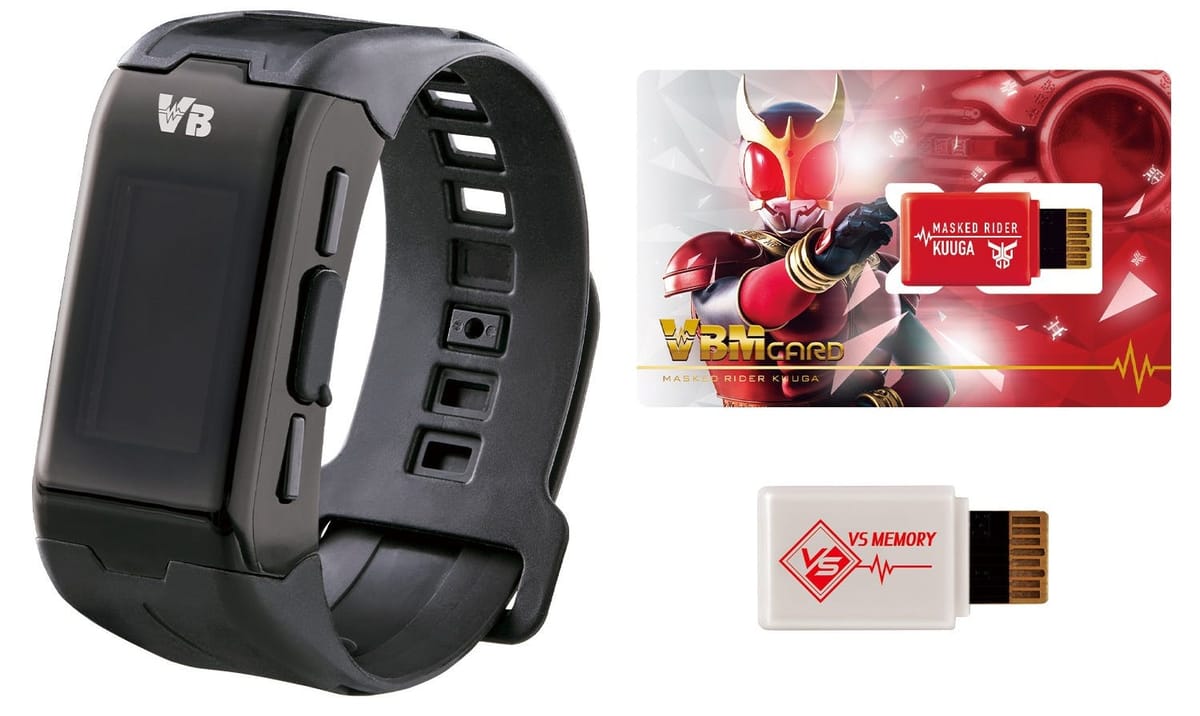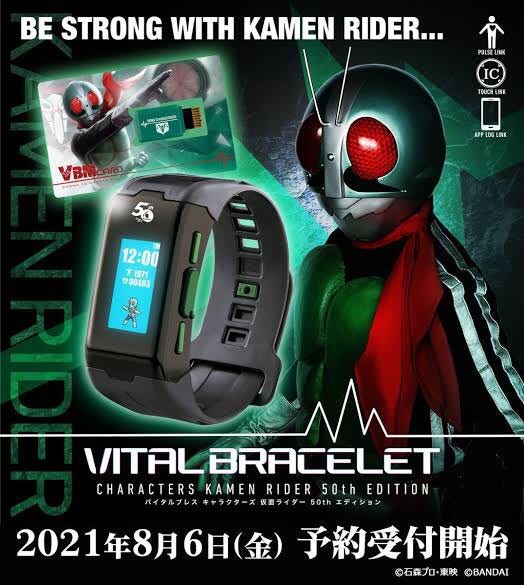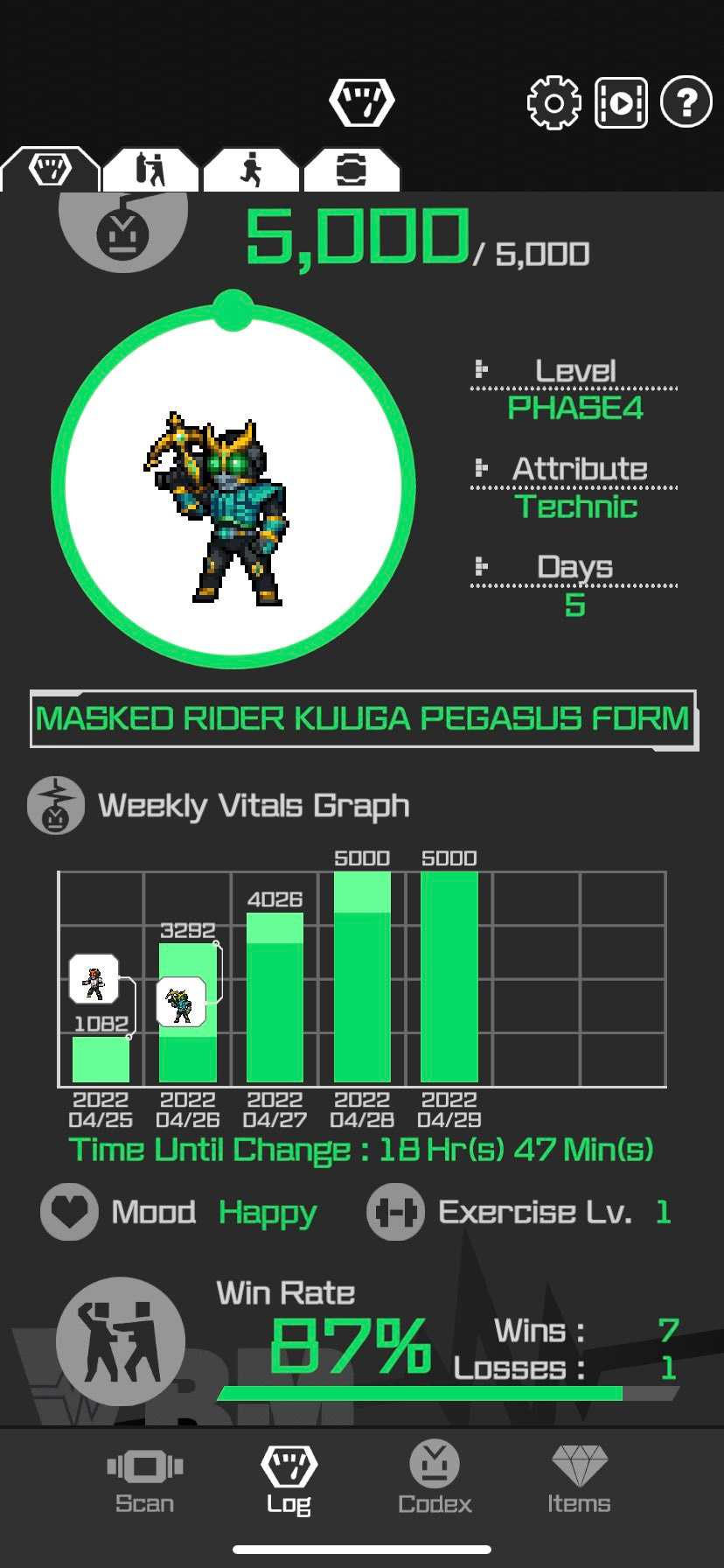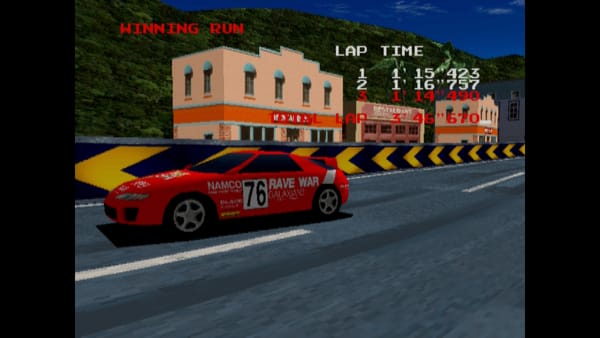I had fun with my Kamen Rider Vital Bracelet until it fell off in the street
Cute concept is ruined by cheap materials and “the StreetPass problem”

I thought I was going to write up the Vital Bracelet, Bandai’s recent exercise toy, after a full run with the device. I’d raise my own little pixel Kamen Rider, train his stats by going jogging, get him into battles, and evolve him into Kuuga Ultimate Form. It was gonna rule.
What actually happened was I had a Kamen Rider Kuuga Pegasus Form— the weak one— on my wrist for about a week. He couldn’t get any stronger, because nobody else in America has a Vital Bracelet. The first time I went out with friends wearing the bracelet on my arm, it popped off without my even noticing and got lost forever, wiping out my week’s work. So I’ll go ahead and write my review now.
The Vital Bracelet was actually thought up for the current generation of Digimon, as a fitness toy that would force kids (and big kids, such as myself) to get up and get active. Tiny cartridge expansions exist for all sorts of Digimon as well as Kamen Rider and Ultraman, and the Kuuga expansion— which you can only buy as a set with the bracelet— of course caught my eye.1

Similar to a Fitbit or other fitness bracelet, the Vital Bracelet goes around your wrist and reads your pulse and footsteps.2 It’s not extremely advanced tech: it can’t tell the difference between you running and you simply shaking your arm in place, for example.3 There’s a companion smartphone app, and a lot of missions and items to help with your character’s growth.4 But the only way to make your character stronger is to get outside, get your heart rate up, and cover some distance on foot.

The Bracelet’s fitness requirements are pretty gentle: get two miles in a day and you’ll be fine. But the slow and steady approach got me up and active consistently. There’s a pressure to meet your daily goals, because the character will evolve in a day, and to get it to its strongest form, you need to put in a lot of work. I took long, leisurely walks in the neighborhood and pretty quickly maxed my Rider’s experience…. Which brings us to a big problem.
A critical part of the Vital Bracelet progression is running into other Vital Bracelet users and battling them: this all happens automatically via near-field connection without the users having to do anything. It’s supposed to happen as a matter of course.
But like a lot of these kinds of toys— do you remember the 3DS’ StreetPass feature, by any chance?— the Vital Bracelet assumes you’re a kid in a population-dense area where this toy is actually popular, like say Tokyo. (Also, this is definitely a pre-pandemic concept.) You’d just run into people passively, and either you’d battle and get stronger or you’d lose three in a row and permanently die, as is the rule.
I’m in New York, where these bracelets are only available by Bandai’s limited mail order (which ran me $80 shipped) and from importers (who sell the same thing for $40 shipped). I’d have been lucky if I ran into into a single person with one of these, and indeed I never did. Because I never ran into anyone with a Vital Bracelet, I never got my character into very many fights. A very limited single-player battle mode doesn’t help enough to make a difference.
To evolve, the character has to meet certain requirements in every department: experience, distance run, missions, number of battles, and win rate. If it’s below the line on any one of these, it won’t evolve the next day.
Because my character couldn’t get into any fights, its growth was stunted days beyond the point it was “supposed” to evolve, leaving it stuck on the evolution tree. I had a max-XP character for about three days and at a point, the poor guy just had nothing to do.
Adding insult to injury, I lost the bracelet the first time I ventured outside my neighborhood with it. Let’s talk about how that happened and why, because it wasn’t just me being ADHD-forgetful.

The short 9” wristband on the Vital Bracelet is, to put it gently, cheapo garbage. Held together precariously by a soft plastic plug in a soft plastic slot, the bracelet will inevitably pop loose and fall from your arm during physical activity, regardless of tightness.
Couple this with the fact that this is an exercise bracelet— one that cost me $80— and you’ll start to see the problem. This bracelet falls off during walks. It falls off during jogs, and you bet your ass it falls off if you dare to run with it. I found myself going out in long-sleeved jackets just to make sure the bracelet stayed on me.
So even though I did have fun for about a week playing the Vital Bracelet game, and though I was rather heartbroken when I lost it5, I absolutely would not recommend the toy to anybody, kid or adult. (I definitely don’t recommend it for a kid, as the app’s English support is only about 50%. Better go learn katakana: it doesn’t take long anyway.) I’m not going to tell you to buy a watch that falls off.
Why Kuuga? Kamen Rider Kuuga (2000) was a revival for the character after it was absent through the late 90s. As an anniversary title and a revival, Kuuga couples a highly traditional, somewhat dark approach with top-notch practical effects and fight choreography (as well as some comically dated CG). Like a Rider Kick strong enough to level a city, it’s simple and powerful. The finale is unforgettable, and the character’s popularity has endured. ↩
I found it very amusing the way Bandai dodges any legal responsibility for the output: your heart rate is a “game value”, according to the manual, and the bracelet won’t display a heart rate under 65! ↩
Hard Missions ask players to run or crunch or squat for 20 seconds or longer, and can all be cheated by simply shaking your arm. ↩
Bandai did not bother translating the English instructions, though, and you’re going to need them. Google “vital bracelet instructions English” for the Digimon version’s manual. BIG ONE: Hold both buttons on the home screen to put the character in sleep mode. Older models don’t have this. ↩
The heartbreak of having one’s RPG save game deleted as a child returned to me, a nostalgic shock. ↩



